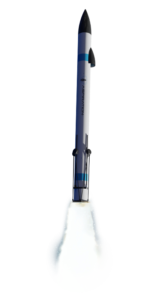THE FIRST
SELF LANDING
ROCKET IN EUROPE
THE FIRST
SELF LANDING
ROCKET IN EUROPE
THE FIRST
SELF LANDING
ROCKET IN EUROPE


OUR MISSION
For this reason we are looking towards developing a self landing rocket demonstrator that is reusable, robust and easy to maintain/repair! This will be done using a 3D-print manufacturing method that works even in low or zero gravity environments. So we want to set the first milestone to produce rockets in space or on another planet like Mars or Moon. Here we have constantly in the back of the head to use also the potential space debris again for possible filament. Non-printable components such as electronics should be designed and laid out in such a way that they are easy to maintain/repair and allow them many life cycles.
FIRST SELF LANDING ROCKET IN EUROPE
The main reason for self landing rockets is the reusability. At the moment there is no self landing rocket in Europe. Some experimental rockets land on the ground by using a parachute. A big disadvantage of this is, that the landing site can be located in a very large radius. Depending on the terrain of the launch site, the recovery of the rocket may be difficult. Our rocket shall be able to navigate and land on a specified spot for easy recovery.
FIRST SELF LANDING HYBRID ROCKET
FIRST NEARLY COMPLETE 3D PRINTED ROCKET
In industry, more and more components are manufactured via 3D printing. Even the filament material availability growth from day to day, so that even metal alloy filaments are available. This manufacturing method offers the possibility to produce complex components with a minimal effort in material. Some of the processes are also possible in low to zero gravity environment like it is in space or on another planet. The old traditional manufacturing processes often need a special adaption of the machines, with 3D printing that point is obsolete. This is an important point for the sustainable use of resources.
FREQUENTLY ASKED QUESTIONS
A hybrid rocket is a “mixture” between a rocket that uses only liquid propellants and one that uses only solid propellants. A hybrid rocket commonly uses a solid fuel and a liquid or gaseous oxidizer.
Faster than you can walk of course!
Maybe you can, please contact us!



OUR MISSION
For this reason we are looking towards developing a self landing rocket demonstrator that is reusable, robust and easy to maintain/repair! This will be done using a 3D-print manufacturing method that works even in low or zero gravity environments. So we want to set the first milestone to produce rockets in space or on another planet like Mars or Moon. Here we have constantly in the back of the head to use also the potential space debris again for possible filament. Non-printable components such as electronics should be designed and laid out in such a way that they are easy to maintain/repair and allow them many life cycles.
FIRST SELF LANDING ROCKET IN EUROPE
The main reason for self landing rockets is the reusability. At the moment there is no self landing rocket in Europe. Some experimental rockets land on the ground by using a parachute. A big disadvantage of this is, that the landing site can be located in a very large radius. Depending on the terrain of the launch site, the recovery of the rocket may be difficult. Our rocket shall be able to navigate and land on a specified spot for easy recovery.
FIRST SELF LANDING HYBRID ROCKET
FIRST NEARLY COMPLETE 3D PRINTED ROCKET
FREQUENTLY ASKED QUESTIONS
A hybrid rocket is a “mixture” between a rocket that uses only liquid propellants and one that uses only solid propellants. A hybrid rocket commonly uses a solid fuel and a liquid or gaseous oxidizer.
Faster than you can walk of course!
Maybe you can, please contact us!


OUR MISSION
For this reason we are looking towards developing a self landing rocket demonstrator that is reusable, robust and easy to maintain/repair! This will be done using a 3D-print manufacturing method that works even in low or zero gravity environments. So we want to set the first milestone to produce rockets in space or on another planet like Mars or Moon. Here we have constantly in the back of the head to use also the potential space debris again for possible filament. Non-printable components such as electronics should be designed and laid out in such a way that they are easy to maintain/repair and allow them many life cycles.
FIRST SELF LANDING ROCKET IN EUROPE
The main reason for self landing rockets is the reusability. At the moment there is no self-landing rocket in Europe. Some experimental rockets land on the ground by using a parachute. A big disadvantage of this is, that the landing site can be located in a very large radius. Depending on the terrain of the launch site, the recovery of the rocket may be difficult. Our rocket shall be able to navigate and land on a specified spot for easy recovery.
FIRST SELF LANDING HYBRID ROCKET
FIRST NEARLY COMPLETE 3D PRINTED ROCKET
FREQUENTLY ASKED QUESTIONS
A hybrid rocket is a “mixture” between a rocket that uses only liquid propellants and one that uses only solid propellants. A hybrid rocket commonly uses a solid fuel and a liquid or gaseous oxidizer.
Faster than you can walk of course!
Maybe you can, please contact us!


